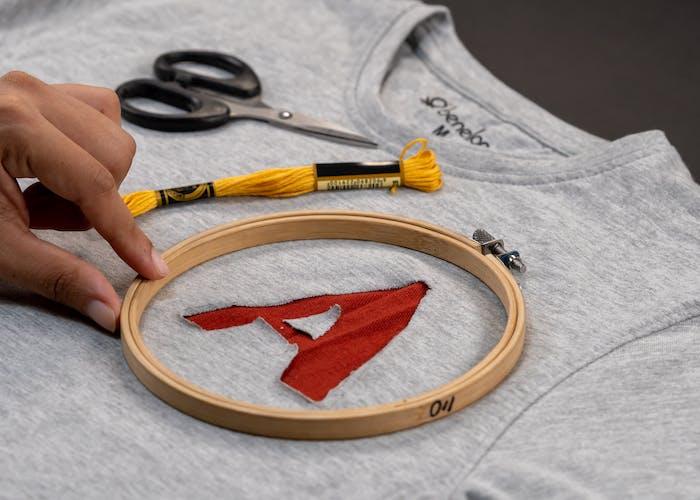Introduction
In the world of fashion, sewing has undergone a remarkable evolution. From the days of handmade garments to the emergence of haute couture and the contemporary fast fashion industry, this journey reflects the dynamic changes in our society, culture, and technology. This article will explore the Sewing Revolution, tracing its path through history and into the modern era. Let's dive into this fascinating transformation of the needle and thread.

The Art of Handmade Sewing
A Stitch in Time
Before the age of machines and mass production, sewing was a painstaking and intricate art form. Skilled artisans meticulously crafted clothing by hand, with each garment requiring an extensive amount of time and effort. This period marked the foundation of fashion, where each piece was a unique work of art.
The Birth of Tailoring
Tailors were the unsung heroes of this era. They took measurements, designed patterns, and hand-sewed intricate details onto garments. The exclusivity of handmade clothing was revered, as only the elite could afford such luxury.
Sewing as a Family Tradition
In many households, sewing was a tradition passed down through generations. Mothers taught their daughters the art of stitching, creating bonds and sharing techniques that would continue to evolve.

The Rise of Haute Couture
The Emergence of Fashion Houses
The 19th century saw the birth of the first fashion houses, such as Charles Frederick Worth in Paris. Haute couture, or "high fashion," became synonymous with exclusive, custom-made clothing. These houses set the stage for the modern fashion industry.
Handcrafted Masterpieces
Haute couture was all about creating one-of-a-kind pieces. Fashion designers worked closely with clients, designing and crafting garments to their precise specifications. Each piece was a masterpiece, reflecting the client's style and personality.
The Influence of Haute Couture
While haute couture was limited to the elite, it had a profound impact on fashion trends. Ready-to-wear fashion brands looked to haute couture for inspiration, adapting elements of the handcrafted designs for the mass market.
Fast Fashion: The Contemporary Sewing Revolution
The Industrial Revolution
The Industrial Revolution brought mechanization to the sewing industry. Sewing machines revolutionized the production process, making clothing more affordable and accessible to a broader audience.
Mass Production
Fast fashion brands like Zara and H&M have embraced the principles of mass production, churning out clothing at an unprecedented rate. This rapid turnover of trends has reshaped the fashion industry, with new collections hitting the shelves every few weeks.
The Impact of Technology
Advancements in technology, such as 3D printing and digital design, have further transformed the fashion landscape. These innovations have made it easier for designers to create and consumers to access the latest styles.

The Future of Sewing
Sustainability and Slow Fashion
In recent years, there has been a growing awareness of the environmental impact of fast fashion. This has led to a rise in sustainable and "slow fashion" movements, emphasizing quality over quantity and ethical production.
Customization and Personalization
Advancements in technology have also allowed for more extensive customization. 3D body scanning and AI-powered design tools offer consumers the opportunity to create personalized clothing that fits them perfectly.

The Enduring Craftsmanship of Haute Couture
Despite the dominance of fast fashion, haute couture endures as a symbol of craftsmanship and artistry. Many designers continue to create custom pieces that showcase the highest levels of skill and creativity.
Conclusion
The Sewing Revolution has taken us on a remarkable journey from the painstaking art of handmade sewing to the high-paced world of fast fashion. While the landscape of fashion continues to evolve, the traditions of the past, including the art of haute couture, remain as a testament to the enduring power of craftsmanship.
FAQs
Q1. What is haute couture, and how does it differ from fast fashion?Ans: Haute couture is a form of high-end, custom-made fashion, while fast fashion refers to the rapid production and turnover of trendy clothing for the mass market. The main difference lies in the exclusivity, craftsmanship, and customization of haute couture compared to the affordability and speed of fast fashion.
Q2. How has technology impacted the sewing industry?
Ans: Technology has brought significant changes to the sewing industry, from the invention of sewing machines during the Industrial Revolution to modern innovations like 3D printing and digital design. These advancements have made clothing production more efficient, accessible, and sustainable.
Q3. What is the slow fashion movement?
Ans: The slow fashion movement advocates for sustainable and ethical fashion practices. It emphasizes quality over quantity, encouraging consumers to buy fewer, high-quality items and supporting brands that prioritize ethical production and environmental responsibility.
Q4. Can anyone access haute couture, or is it limited to the wealthy elite?
Ans: Haute couture is typically associated with the elite due to its high cost, but its influence extends to the broader fashion industry. Many fashion trends originate from haute couture, influencing ready-to-wear fashion accessible to a wider audience.
Q5. How can I contribute to a more sustainable fashion industry?
Ans: You can contribute to a more sustainable fashion industry by supporting eco-friendly brands, buying high-quality clothing that lasts, and practicing responsible consumption. Additionally, consider recycling, upcycling, or donating your clothing to reduce waste and promote sustainability.

0 comments